2025 IIDA BEST Award: Serve – Higher Education
International Interior Design Association, Rocky Mountain Chapter
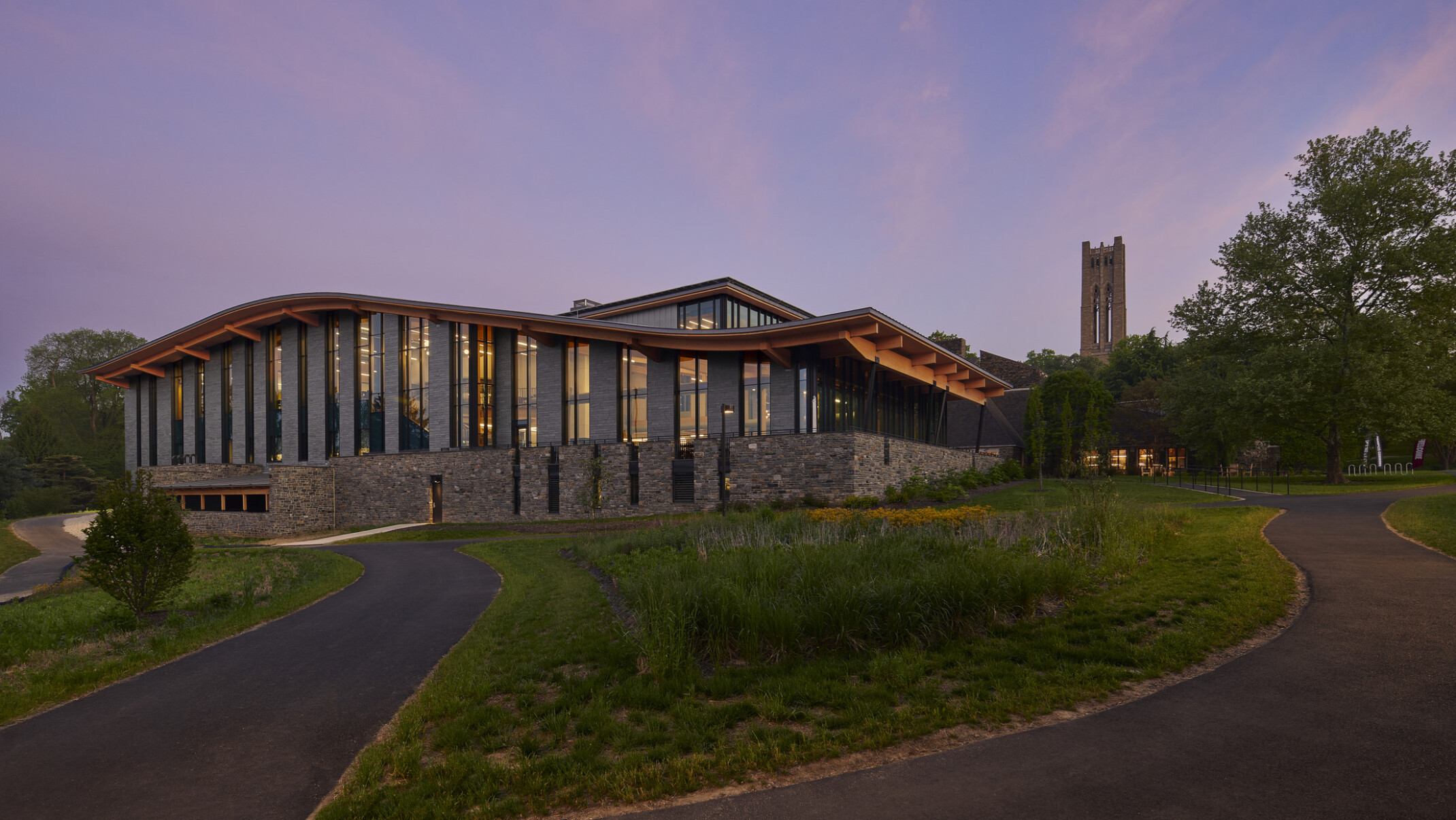
Project Location
Swarthmore, PA
Client
Swarthmore College
Area
90,000 SF
Services
Architecture, interiors, MEP engineering, high-performance design, campus engagement
Blending architectural warmth with high-performance goals, Swarthmore College’s new Dining and Community Commons elevates how students eat, connect, recharge, and thrive. Every element – from the timber structure to the 100-seat outdoor dining terrace – was crafted to enhance the student experience and create a vibrant hub rooted in the Swarthmore landscape.
A deeply collaborative, research-driven process included more than 55 campus-wide meetings – among them 500+ one-on-one student interviews, focus groups, open forums on sustainability and food service, and town halls with faculty and staff. These conversations shaped the vision and features of the new facilities, ensuring a direct response to student needs for connection, refuge, and belonging.
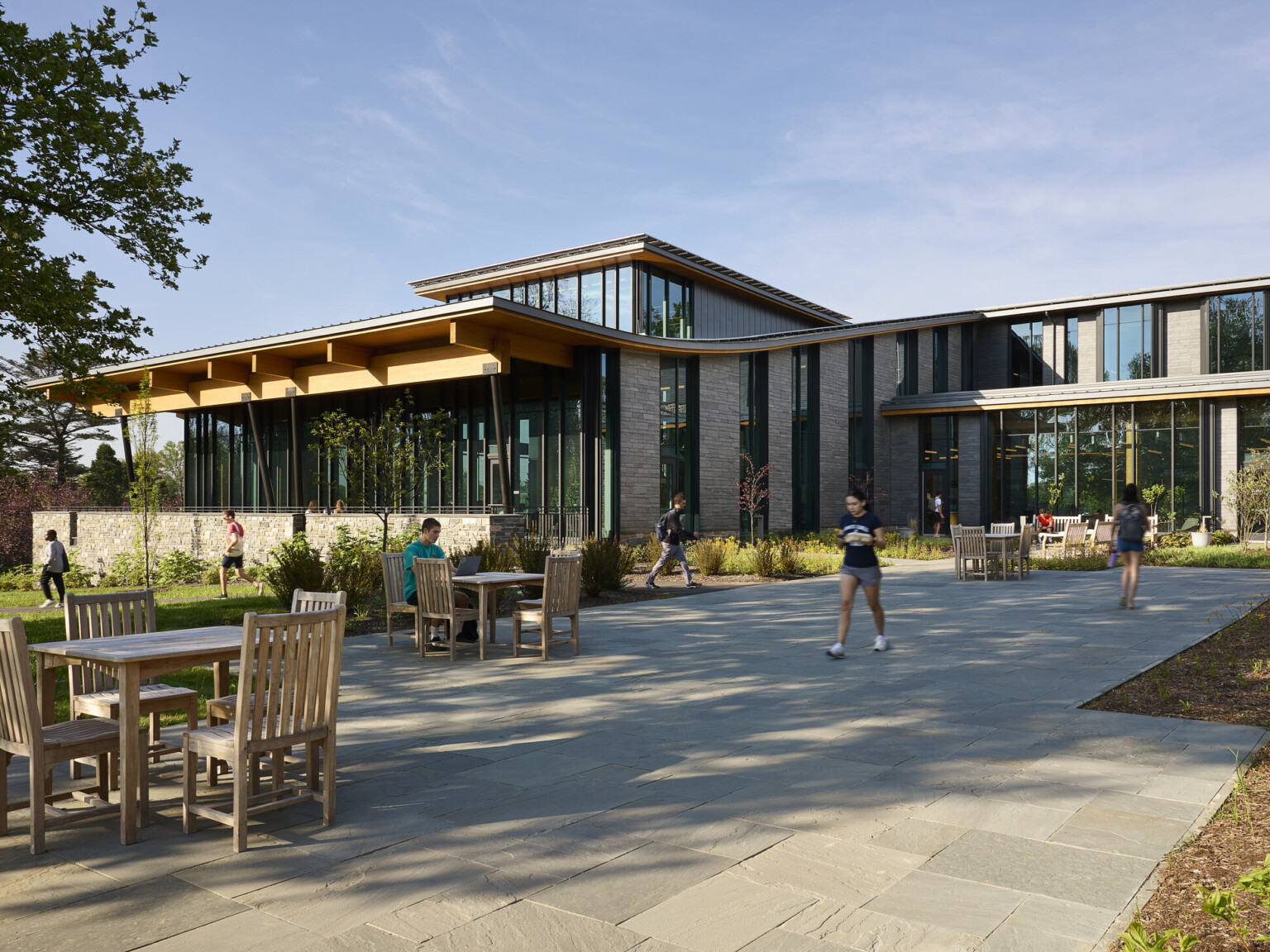
Swarthmore’s new Dining Center seats 800 and features 10 diverse food platforms, including allergy-aware, vegan, and global options. Aiming for a 40% plant-based menu, it reflects student input and a commitment to ethical dining. Mass timber, natural light, and views of the Scott Arboretum create a warm, biophilic setting. With an all-electric kitchen, rooftop solar, and geo-exchange system, the center is built for flexibility, sustainability, and student wellbeing.
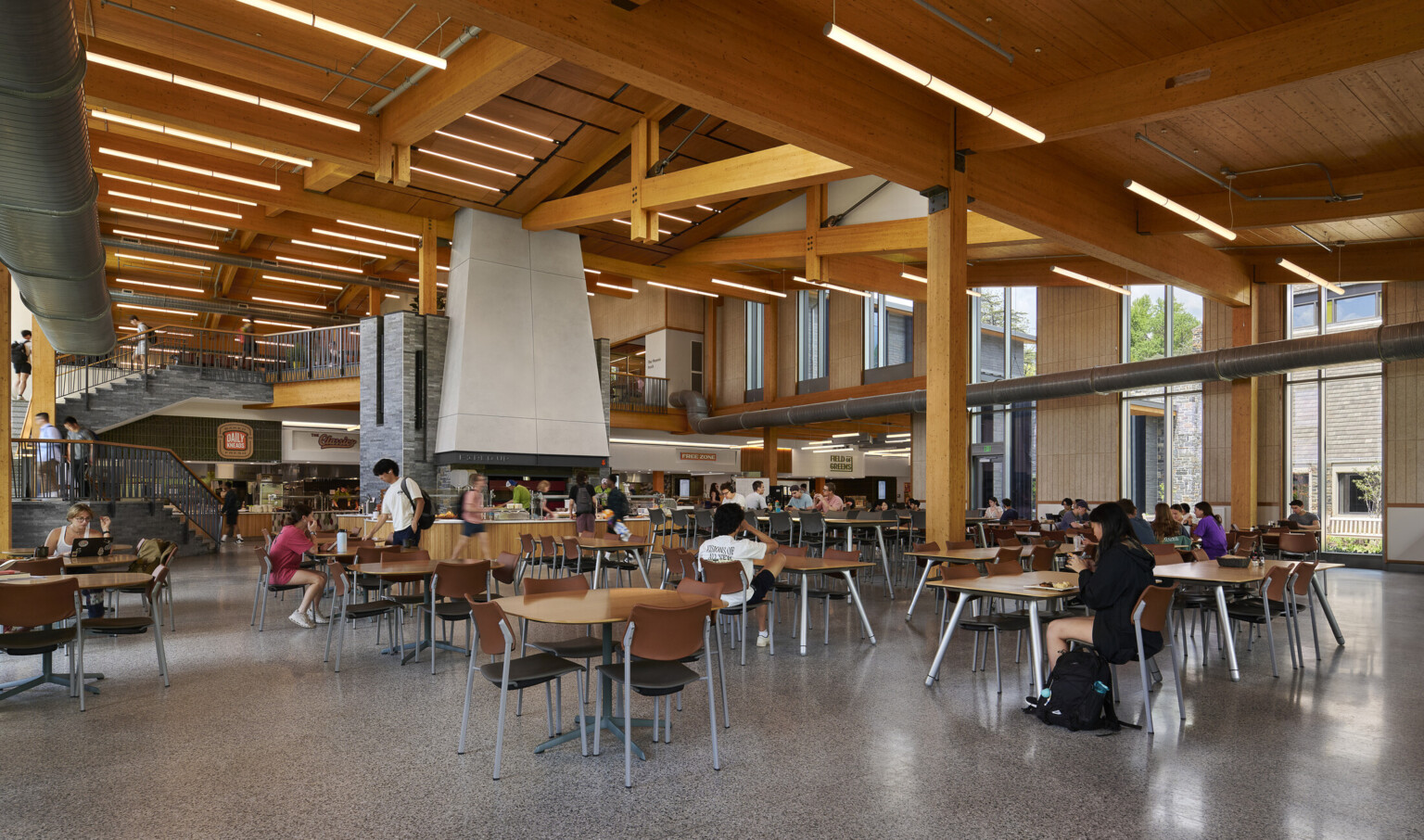
The renovated Sharples Community Commons transforms a former cafeteria into a dynamic student hub with lounges, study areas, meeting rooms, and the Office of Student Engagement. Retail dining options offer late-night access and activate the building beyond traditional dining hours, reinforcing its role as a social anchor on campus. Warm timber, natural light, and integrated tech create a flexible, inviting space that meets student needs for connection, collaboration, and relaxation beyond classrooms and residence halls.
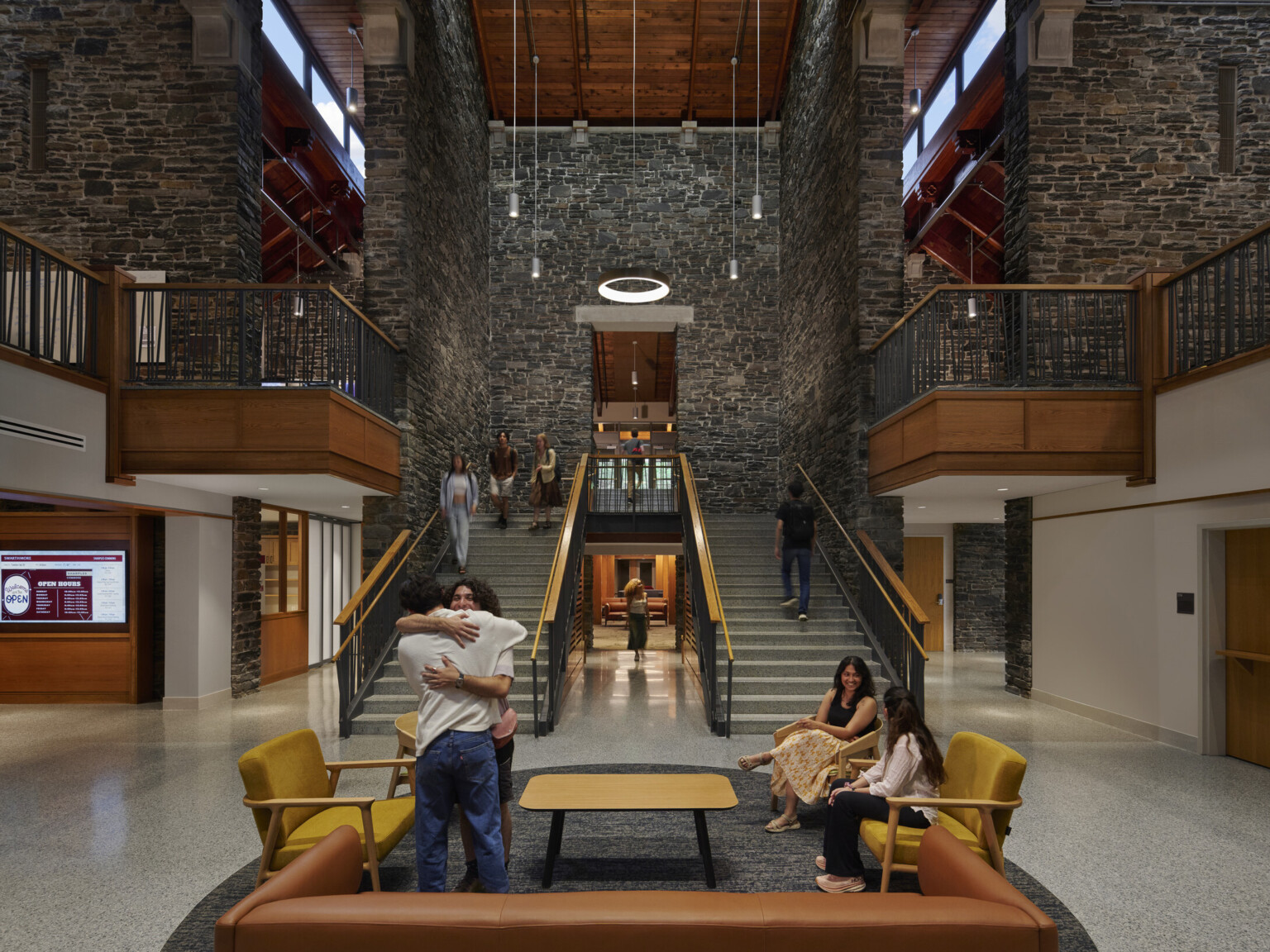
Swarthmore College set Living Building Challenge Petal Certification as the project goal, focusing on beauty, equity, and energy. While peer dining facilities operate at an average energy use intensity of 500 kBtu/SF/yr, this project targets 300 for kitchens and 50 for non-kitchen spaces, averaging 85 kBtu/SF/yr overall. Our design features all-electric cooking, on-site solar, geo-exchange, and Red List–free materials, advancing the College’s goal of a carbon-neutral campus and fostering a culture of care that empowers students to live sustainably.
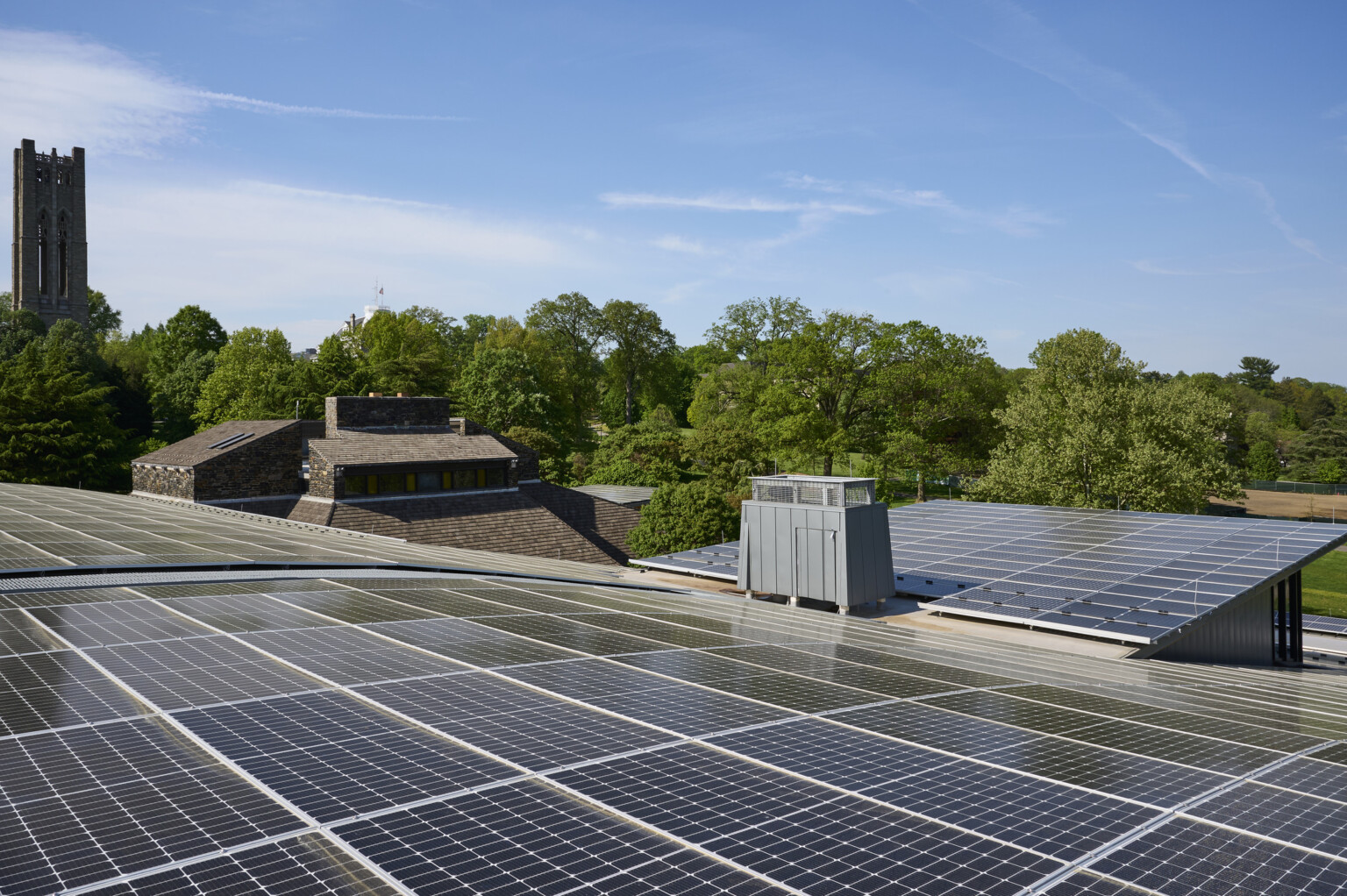
The project honors Swarthmore’s sense of place by preserving Sharples Hall’s central role, integrating Arboretum views, and introducing a warm mass timber structure. The reimagined design improves accessibility and circulation, restoring the building as a welcoming hub that fosters belonging, celebrates tradition, and deepens connections among students and their environment.
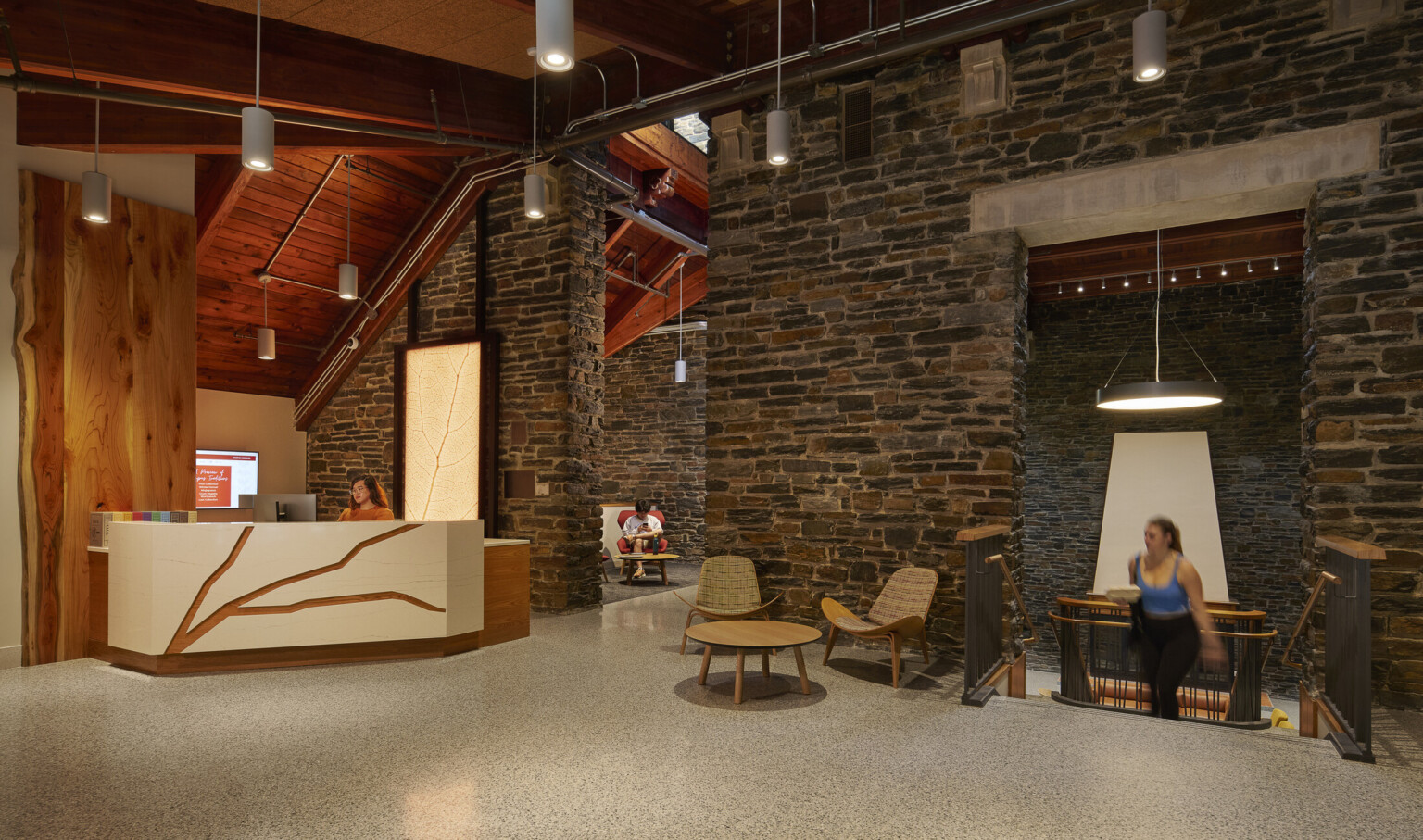
Awards
2025 IIDA BEST Award: Serve – Higher Education
International Interior Design Association, Rocky Mountain Chapter
2025 SCUP Excellence Awards: Honorable Mention
Society for College and University Planning Excellence Awards
2024 American Architecture Award: Restoration/Renovation
American Architecture Awards
2023 BEST Awards
IIDA Rocky Mountain